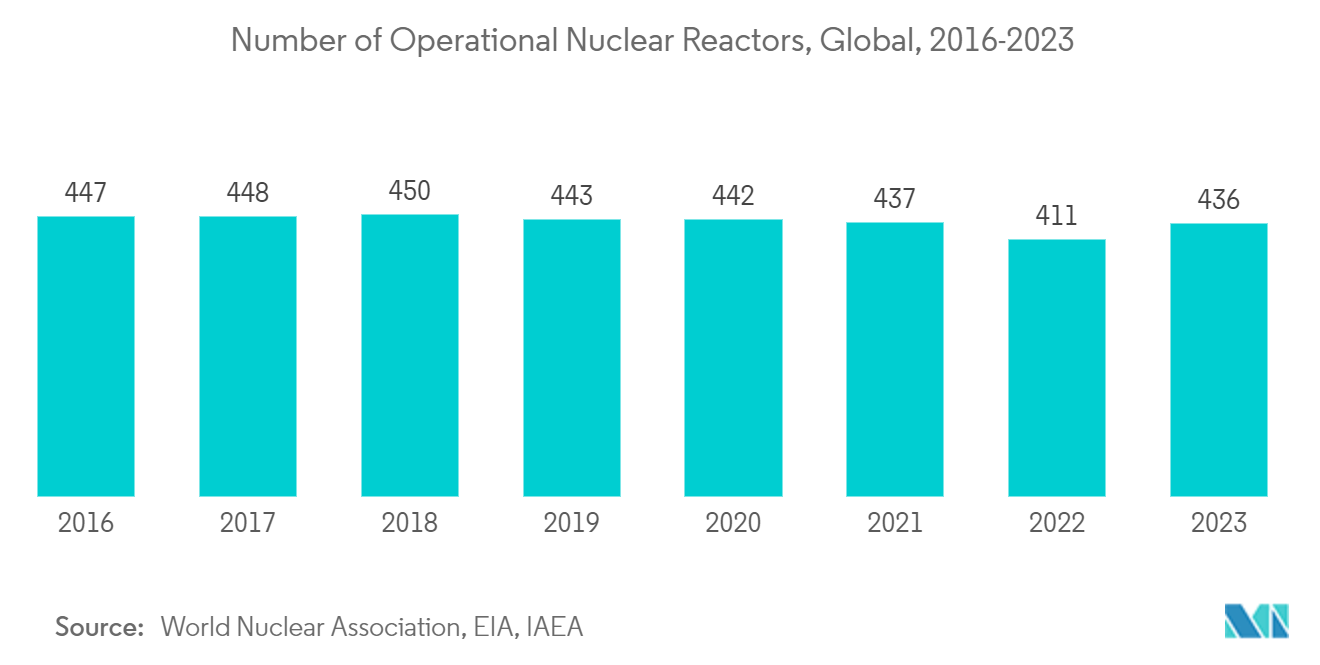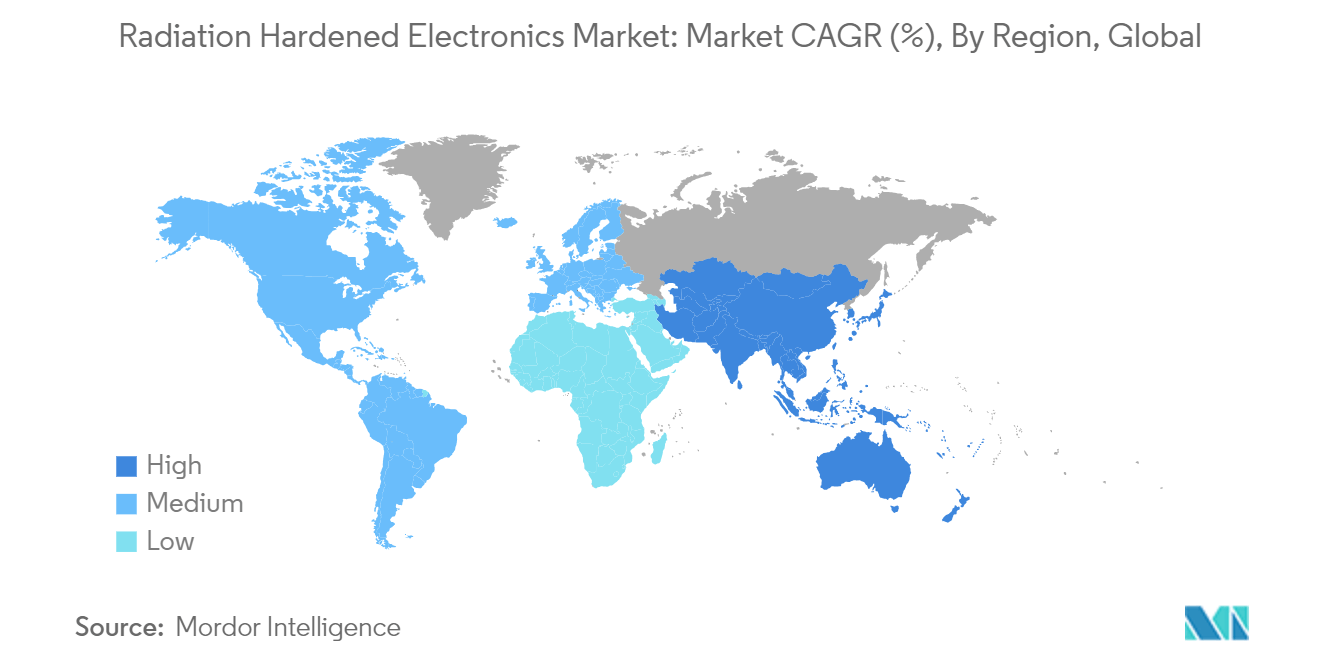Market Trends of Radiation Hardened Electronics Industry
Nuclear Power Plants to Witness Significant Growth
- The demand for radiation-hardened electronics within nuclear power plants is on the rise as facility managers increasingly deploy these specialized components to enhance signal integrity, bolster the safety and efficiency of nuclear reactors, and mitigate radiation-induced degradation of plant equipment.
- The integration of radiation-hardened (rad-hard) electronics has proven instrumental in nuclear sensing and instrumentation. Placing advanced sensors and associated electronics closer to reactor cores holds promise for optimizing reactor control and operation by ensuring heightened signal accuracy, precision, and fidelity. This advancement translates into safer and more efficient energy production processes.
- Given the extensive reliance on electronic systems within nuclear facilities, there's a crucial need for devices capable of withstanding substantial radiation exposure. Wireless monitoring in nuclear power plants, facilitated by radiation-hardened electronics, is paramount. These electronics also serve a critical role in surveying nuclear power plants, especially in scenarios where communication infrastructure fails during critical post-accident situations or in areas with exceedingly high radiation fields.
- The number of operational nuclear reactors worldwide is expected to maintain a significant presence in the foreseeable future, driven by increasing investments in developing regions. For instance, data from the World Nuclear Association, EIA, and the International Atomic Energy Agency (IAEA) indicated 411 operational nuclear reactors globally in 2022, a figure that surged to 436 by May 2023. Consequently, the continued investments in nuclear power plants are poised to fuel opportunities within the studied market.
- Electromagnetic and thermal radiation represent common occurrences in electricity generation and distribution infrastructures, heightening the susceptibility of general electronic components to malfunction. Consequently, the anticipated growth in the adoption of radiation-hardened electronics during the forecast period is driven by the imperative to ensure robust performance under such demanding conditions.
- Beyond nuclear power plants, the adoption of nuclear energy generation technology is expanding into various sectors, including nuclear submarines. The emergence of several new nuclear-powered submarine projects in recent years is expected to sustain and drive further opportunities within the studied market.

Asia Pacific is Expected to Witness Significant Growth
- Due to a growing number of commercial space projects, the market for radiation-hardened electronic components is driving market growth in the Asia Pacific region. In recent years, China has made significant progress in developing several aerospace core integrated circuits, including FPGA and CPU, which major aerospace projects like human spaceflight and moon exploration have utilized.
- Adhering to the above synopsis, China revealed that the country's space science and technology activities will significantly boost in 2023, including big-ticket missions like the Tianzhou-6 cargo craft, the Shenzhou-16 and the Shenzhou-17 flight missions to solidify its Tiangong space station activities further. The corporation will also take steps to speed up the construction of a new generation of commercial remote monitoring satellites this year and launch these missions. Meanwhile, the BeiDou-3 Navigation Satellite System will witness the launch of three backup satellites.
- China will continue developing and researching radiation-hardened technologies in 2023. It has undertaken to increase the local production of radiation-hardened chips. Space equipment could enable itself to perform all advanced analytics, such as image recognition, picture classification, automated decisions, and timely actions, by incorporating AI/ML functionality in conjunction with radiation-hardened chips on board.
- Moreover, the flourishing semiconductor industry in the region is another factor contributing to market growth. China is trying to indigenize the military and defense sector to promote its competitiveness and technology innovation, further strengthening the military and mitigating risks related to foreign dependence. There is an obvious importance of semiconductors for domestic security.
- China's emphasis on the relationship between security and microelectronics is predicated on four arguments: a strong chip industry will help modernize the PLA and enhance its ability to conduct conventional warfare; the PLA can wage information warfare (IW) by exploiting home-grown advanced semiconductor technologies that enhance its ability to wage unconventional war; as regards defensive IW, a robust indigenous industry can mitigate the risks of dependence on unreliable foreign supplies of critical semiconductors; and China recognizes semiconductors' dual-use nature and the trend of spin-on in its policy of using commercial off-the-shelf (COTS) items in military systems to integrate its rising commercial chip industrial base into its military counterpart.
- Furthermore, it is possible to manufacture radiation-hardened electronics that can endure high temperatures and radiation levels found in nuclear reactors, which have a favorable impact on their total sales. According to the World Nuclear Association, in 2022, Asia accounted for 39 units in the number of reactors under construction worldwide. India's total nuclear power capacity reached about 6.8 gigawatts of electricity from 2021 to 2023.

